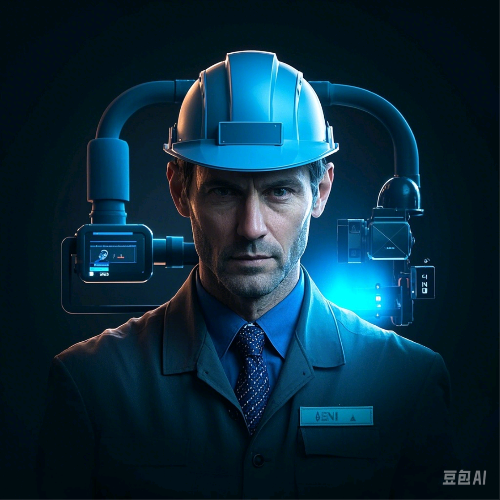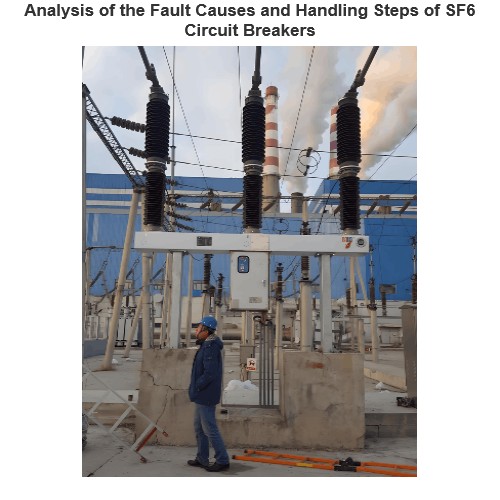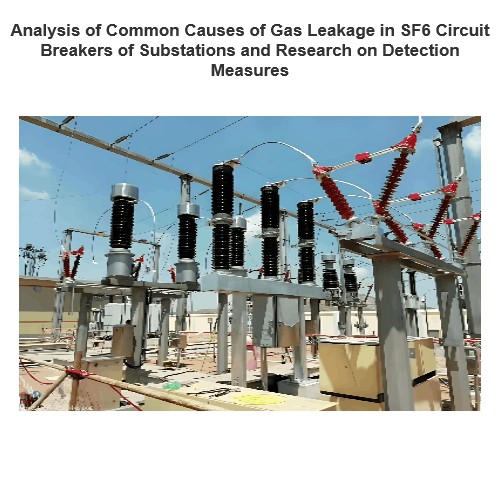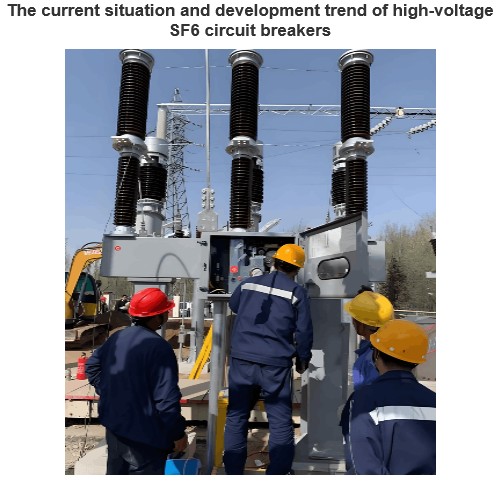The GIS (Gas Insulated Switchgear) utilizes SF₆ gas as both the insulating and arc-extinguishing medium. It boasts several advantages, such as a small footprint, high reliability, excellent safety, and convenient maintenance. The SF₆ circuit breaker, being an integral part of the GIS equipment, holds a dominant position in voltage levels of 110 kV and above.
This article details a fault that occurred during the power generation and synchronization process of Unit 1 in a certain power plant. Specifically, when the 220 kV SF₆ circuit breaker 2201 on the high-voltage side of the main transformer was in the open state, the insulation of Phase C was broken down. As a result, the circuit breaker failure protection and negative sequence current protection were activated, leading to the failure of the unit's startup and grid connection.
1 Incident Process and Handling Procedure
During the power generation startup of Unit 1 and the subsequent synchronization process, the monitoring system reported the activation of the circuit breaker failure protection, the operation of the inverse time negative sequence current protection, the tripping of the electrical protection, and the undervoltage messages of the 220 kV Line Jia and Line Yi. There were no other protection alarms for the unit.
Unit 1 executed the shutdown procedure. The 220 kV switch 2211 of Line Jia and Line Yi tripped, and the switch of the auxiliary power transformer (2200 Jia) also tripped, while the self-switching device of the auxiliary power supply was activated. After confirming with the grid dispatching and control personnel, it was determined that there were no faults in the 220 kV Line Jia and Line Yi. Initially, it was judged that the main circuit breaker 2201 had a fault.
When the 2201 circuit breaker was opened for inspection, a large amount of dust and other attachments were found at the fracture of the arc extinguishing chamber of Phase C of the 2201 circuit breaker, which were dispersed inside the gas chamber. There were no obvious short-circuit points on the surface of the circuit breaker, and no ground short-circuit phenomenon of the circuit breaker was detected. Initially, it was analyzed and judged that the insulation between the break points of Phase C of the 2201 circuit breaker was broken down.
To ensure the safe and stable operation of the unit and conduct an accident analysis, the three phases of the 2201 circuit breaker were uniformly replaced. Relevant electrical preventive tests and the unit's manual startup, zero-voltage rise, and grid connection tests were carried out.
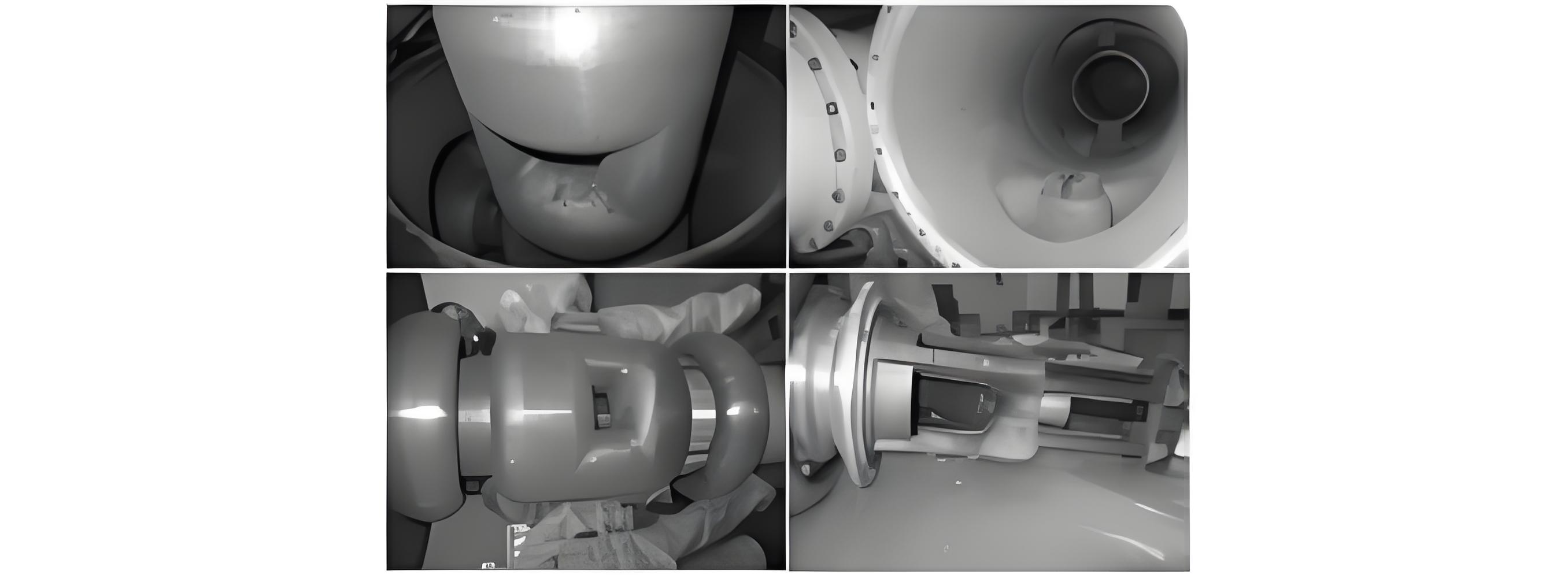
2 Analysis of Protection Action
By examining the fault oscillogram of Unit 1, it is found that when the protection acts, Unit 1 is still in the synchronization process and this process lasts for 25 seconds (the normal synchronization closing time is about 80 seconds), and no synchronization closing command is issued during this period. Subsequently, by checking the protection oscillogram of the generator-transformer unit, it is discovered that there is current in Phase B and Phase C on the low-voltage side of the main transformer, while there is no current in Phase A (the transformer wiring configuration is Yn/D11).
The unbalanced value of the inverse time negative sequence overcurrent of Unit 1 during power generation exceeds the threshold and accumulates to trigger the tripping section, causing the protection to trip. The inverse time negative sequence overcurrent protection of Unit 1 during power generation trips the 2201 circuit breaker. Since the circuit breaker is still in the open state at this time, it is unable to cut off the breakdown current of Phase C. At this moment, the protection RCS - 921A of the 2201 circuit breaker receives the failure protection signal initiated by the three-phase trip of the generator-transformer unit. Meanwhile, there is current in Phase C, which exceeds the failure setting value, and the failure protection acts, causing Unit 1 to execute the shutdown procedure. The failure protection acts to remotely trip the 220 kV Line Jia and Line Yi 2211 circuit breaker through the line protection RCS - 931AM. Therefore, this protection action is caused by the breakdown of the break point of the 2201 circuit breaker when it fails to close, and all protection actions are correct.
3 Analysis of the Fault Cause
When the fault occurs, the voltage on the generator side of the unit has reached the rated value, but the conductive part of the switch has not been closed. At this time, the voltage across the switch reaches its maximum value. Before the insulation of the break point of Phase C of the 2201 circuit breaker breaks down, the monitoring system does not issue an alarm for the low pressure in the SF₆ gas chamber, and on-site inspection shows that the SF₆ density relays are all within the green zone.
The total number of operations of the 2201 circuit breaker is 535 times, which is far from the designed rated number of operations, which is 5000 times. Based on the on-site fault oscillogram data, the actual state of the faulty circuit breaker, and the relevant maintenance data of the circuit breaker of Unit 1, the possible causes of the insulation breakdown between the break points of Phase C of the 2201 circuit breaker are preliminarily analyzed as follows:
(1) There are structural problems inside the arc extinguishing chamber of the Phase C circuit breaker. The internal components may be loose, resulting in discharge and breakdown between the ports.
(2) There are impurity problems in the arc extinguishing chamber of the Phase C circuit breaker. During multiple operations of the circuit breaker, a discharge channel is gradually formed, causing insulation breakdown.
(3) There are material problems with the break point of the Phase C circuit breaker. Improper use of the break point material causes impurities to be generated during the operation of the circuit breaker and adhere to the outer surface of the port for a long time. Gradually, a discharge channel is formed, ultimately leading to insulation breakdown between the break points.
The faulty Phase C arc extinguishing chamber is transported back to the factory for disassembly and analysis. At the same time, either the non-faulty Phase A or Phase B (any one phase) is transported back to the factory for disassembly and comparative analysis. The conclusion of the analysis report is that discharge occurs between the contacts A and B of the arc extinguishing chamber.

4 Preventive Measures
Strengthen the procurement and usage management of SF₆ gas, and strictly carry out work in accordance with the requirements of the operation instruction manual and maintenance regulations during the maintenance operation process. During the replacement and installation of the arc extinguishing chamber, effective dust prevention measures should be taken. When holes, covers, etc. are opened, dust covers should be used for sealing. If the installation site environment is poor and there is a large amount of dust, the installation should be stopped.
5 Conclusion
Worldwide, there has been no occurrence of such a fault in this type of circuit breaker when it is in the open position. This fault can be attributed to an accidental coincidence or, more likely, influencing factors beyond normal statistical faults. This power plant is a pumped-storage power plant, and the unit frequently switches between the power generation and pumping conditions every day with a large number of operations, making it impossible to conduct a direct comparison. For a more in-depth investigation, transient recorders should be installed on both sides of the circuit breaker to search for possible causes based on the results of long-term observation.


